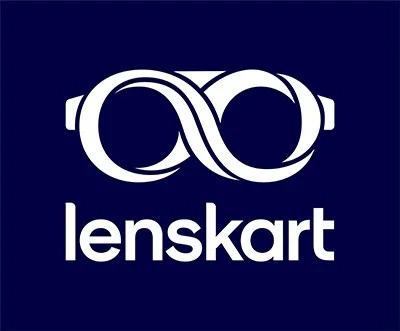In the cutthroat arena of India’s booming direct-to-consumer (D2C) beauty sector, where startups often bloom vibrantly only to wilt under mounting pressures, Plum Goodness has emerged as a resilient phoenix. The homegrown vegan beauty brand, renowned for its science-backed, cruelty-free formulations, has scripted a remarkable comeback story. For the fiscal year ending March 2025 (FY25), Plum reported a staggering Profit After Tax (PAT) of Rs 25 crore—a thunderous reversal from the Rs 84 crore net loss it incurred in FY24. This isn’t just a financial pivot; it’s a testament to strategic agility, consumer obsession, and the unyielding spirit of Indian entrepreneurship in a market projected to hit $30 billion by 2027.
Founded in 2013 by chemical engineer Shankar Prasad, the brand started as a modest e-commerce venture peddling goodness-infused products like green tea face washes and vitamin C serums. Today, with an annual recurring revenue (ARR) hovering around Rs 400 crore, Plum isn’t merely surviving; it’s thriving, doubling down on its core ethos of “bringing goodness to the world” while outpacing competitors in profitability metrics.
Let’s rewind to contextualize this electrifying achievement. In FY24, Plum’s revenue climbed an impressive 22% to nearly Rs 342 crore, fueled by aggressive expansions into men’s grooming (under the Phy sub-brand) and babycare (Baby Plum). Yet, this growth came at a steep cost: marketing blitzes, inventory build-ups, and forays into uncharted territories ballooned operational expenses, widening losses by 17%. Investors, including heavyweights like A91 Partners, Unilever Ventures, and Faering Capital—who had collectively pumped over $50 million into the brand since its 2022 Series C round—watched warily. The beauty sector, after all, is littered with cautionary tales: brands that chased vanity metrics like user acquisition over sustainable margins, only to face cash crunches in a post-pandemic world.
But Plum’s leadership, spearheaded by Prasad’s engineering precision, refused to let ambition eclipse prudence. “We learned that scaling with soul means pruning the branches that don’t bear fruit,” Prasad shared in a recent interview, echoing the brand’s recent strategic recalibrations. The masterstroke? A ruthless focus on high-margin women’s skincare—the heartbeat of Plum’s portfolio. Products like the cult-favorite Hello Aloe & Happy Hydration Day Gel Moisturiser and the Plump It Up Anti-Ageing Gel Mask, which blend ayurvedic actives with clinical efficacy, accounted for over 60% of sales in FY25. By dialing back investments in the nascent Phy and Baby Plum lines—allocating just 15% of the R&D budget to them—Plum slashed variable costs by 25%, according to internal estimates. This wasn’t retreat; it was recalibration, allowing the brand to channel resources into what consumers craved most: clean, effective, and affordable beauty that aligns with India’s wellness renaissance.
The numbers paint a vivid picture of this metamorphosis. Revenue for FY25 is estimated at Rs 450 crore, a robust 32% year-on-year surge, driven by a 40% uptick in repeat purchases via Plum’s slick app and website. Gross margins improved from 52% to 68%, thanks to optimized supply chains—sourcing 80% of ingredients from sustainable Indian farms in regions like Uttarakhand and Kerala, reducing import duties and carbon footprints alike. E-commerce still reigns supreme, contributing 70% of sales through partnerships with Amazon and Flipkart, but offline channels have blossomed too. Plum now boasts 50+ experiential stores in metros like Mumbai, Delhi, and Bengaluru, where customers can swatch vegan lip tints or indulge in free skin consultations powered by AI-driven diagnostics. This omnichannel harmony—blending digital convenience with tactile retail therapy—has boosted conversion rates by 35%, per industry trackers like Tracxn.
What sets Plum apart in this profit odyssey isn’t just the bottom line; it’s the profound synergy between profitability and purpose. In an era where Gen Z and millennial consumers (who form 65% of Plum’s base) demand transparency, the brand’s 100% vegan, paraben-free, and sulfate-free credentials aren’t gimmicks—they’re gospel. Certifications from PETA and Leaping Bunny have fortified trust, translating into a Net Promoter Score (NPS) of 75, rivaling global giants like The Body Shop. Moreover, Plum’s commitment to inclusivity shines through its shade-inclusive foundations and region-specific formulations, like the monsoon-proof hydrators tailored for humid coastal climates. This cultural attunement has resonated deeply in tier-2 cities, where sales grew 50% YoY, underscoring the untapped goldmine beyond urban bubbles.
From a macroeconomic lens, Plum’s turnaround mirrors broader tailwinds buoying India’s D2C ecosystem. Post-COVID, beauty spending has rebounded with vengeance, with McKinsey pegging the sector’s CAGR at 20% through 2030. Regulatory nudges, like the Bureau of Indian Standards’ emphasis on clean labeling, have weeded out subpar players, rewarding innovators like Plum. Funding winters have tempered frothy valuations, forcing a Darwinian shift toward unit economics over hype—a silver lining that Prasad credits for honing the brand’s edge. “Profitability isn’t the endgame; it’s the enabler for bolder bets on innovation,” he asserts, hinting at upcoming launches like AI-personalized serums and zero-waste packaging collaborations with startups.
Yet, no success story is without shadows. Critics point to Plum’s moderated diversification as a potential vulnerability—will over-reliance on skincare leave it exposed if trends pivot to, say, clean makeup or wellness tech? Competition intensifies daily, with behemoths like L’Oréal India acquiring D2C darlings and homegrown rivals like Minimalist nipping at heels with hyper-targeted actives. Supply chain disruptions, from erratic monsoons affecting herbal sourcing to global inflation jacking up raw material costs, remain perennial threats. Plum’s response? A war chest from its $35 million Series C infusion, earmarked for tech upgrades like predictive analytics to forecast demand with 90% accuracy.
For consumers, Plum’s FY25 windfall translates to tangible wins: expect deeper discounts on bestsellers and expanded loyalty perks via the Plum Squad community, a vibrant forum for user-generated content and co-creation. It’s a virtuous cycle—profits reinvested in R&D yield fresher formulations, which delight users, who in turn evangelize the brand through word-of-mouth, India’s most potent marketing force.
also read: EndureAir Soars High with ₹25 Cr Funding Boost to Pioneer Drone Innovations in India
follow us on linkedin and instagram
Last Updated on: Monday, September 29, 2025 2:45 pm by Republic Business Team | Published by: Republic Business Team on Monday, September 29, 2025 2:28 pm | News Categories: Startup, Funding News

